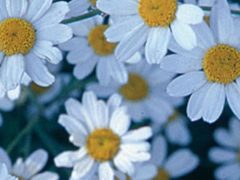
snowy tansy, white bouquet
Tanacetum niveum
Fragrant, lacy, silvery foliage topped with a huge bouquet of white daisies. This plant thrives … Continued
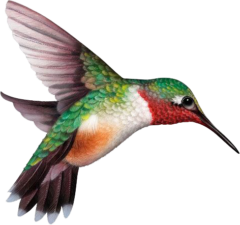 Hummingbirds, bees and butterflies are well-known pollinators, but there are thousands of unsung pollinator heroes, including moths, wasps, flies, and beetles, many mammals, birds, and reptiles, who also take on the job.
Hummingbirds, bees and butterflies are well-known pollinators, but there are thousands of unsung pollinator heroes, including moths, wasps, flies, and beetles, many mammals, birds, and reptiles, who also take on the job.
Pollinators move from plant to plant, fueling up with pollen and nectar from blooming trees, shrubs, perennials, annuals, vegetable plants, and herbs. As they move, the pollinators transport and deposit pollen, fertilizing plants and allowing them to reproduce.
Pollinator plants can be native and non-native, but not all flowering plants are equal when it comes to providing the highest quality protein-rich pollen. Many hybrids don’t even produce pollen at all. The following list includes pollen-rich plants to include in your garden to provide pollinators with food.
Local butterfly expert Lenora Larson has created these informational handouts. You can download them here!
• Butterflies: Flying Flowers in your Garden!
• A Vital Connection: Native Plants and Butterflies
• Long Lips Farm Caterpillar Foodplants
• Butterfly Bartending: Nectar Flowers
• Long Lips Farm: Selected Butterfly Nectar Flowers
• Bee Friendly: Plants for Bees and Other Pollinators
Since 1970 the population of North American birds has dropped nearly 30% — almost three billion birds have vanished from our forests, grasslands, and backyards in less than a human lifetime. It’s a chilling fact that makes it clear that we must act as individuals to help ensure their survival.
Most importantly, ninety-six percent of all terrestrial bird species rear their young on insects so it is also important to grow plants that feed insects to provide a well-rounded habitat in your garden.
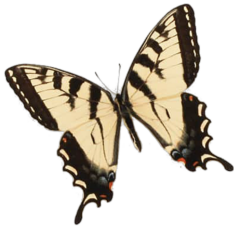

Tanacetum niveum
Fragrant, lacy, silvery foliage topped with a huge bouquet of white daisies. This plant thrives … Continued
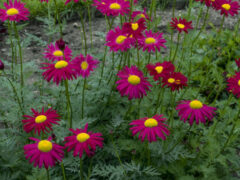
Tanacetum 'Robinson's Red'
Scarlet-red daisy petals measure 2.5″ wide and surround a bright yellow center. Fine ferny foliage … Continued
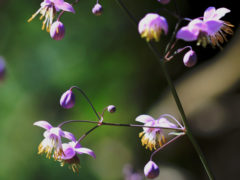
Thalictrum delavayi
Lavender flowers with contrasting yellow stamens mass in large, wiry-branched, airy sprays rising above the … Continued
Thalictrum dioicum
Delicate green fern-like foliage last from spring through fall. Greenish-yellow fringed flowers resemble little tassles … Continued
Thalictrum aquilegifolium
It’s hard to describe in words how pretty this plant is! Foliage resembles columbine and … Continued
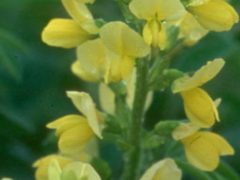
Thermopsis lanceolata
12-18″ spikes of yellow flowers that resemble a lupine or snapdragon. A heat-loving plant native … Continued
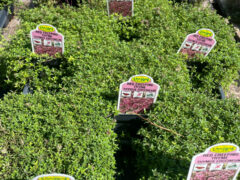
Thymus species
Culinary Thymes English thyme/common thyme (Thymus vulgaris) is the most popular variety of culinary thyme, … Continued
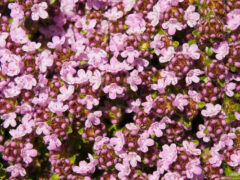
Thymus serpyllum 'Magic Carpet'
Floriferous and aromatic, this low-growing ground cover magically transforms any landscape into a fairy garden. … Continued
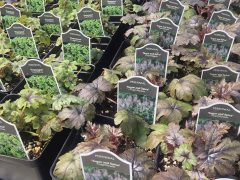
Tiarella hybrids
Tiarella ‘Jeepers Creepers’ Fuzzy green leaves with a dramatic black center form a beautifully patterned, … Continued
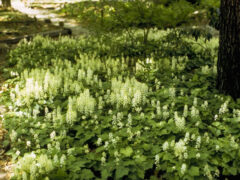
Tiarella cordifolia
Native, mounding ground cover with foamy white flower stalks in early spring. Mature plants send … Continued
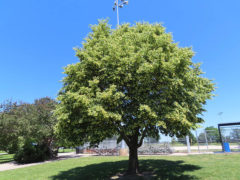
Tilia cordata
‘Greenspire’ A transplant from Europe, where it has been put to use as a shade … Continued
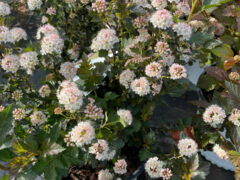
Physocarpus opulifolius
Dark bronze-maroon foliage holds its color all season long, the perfect backdrop clusters of dainty … Continued